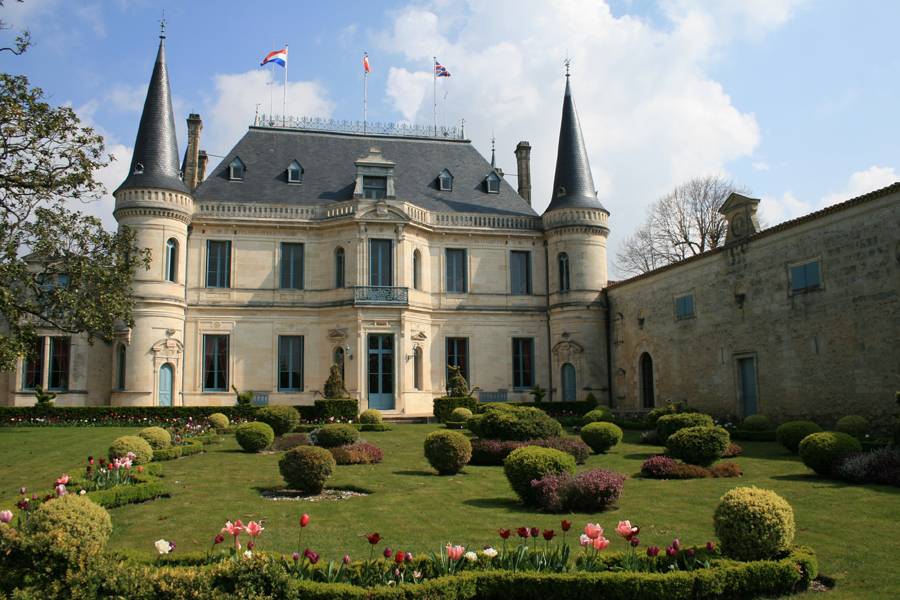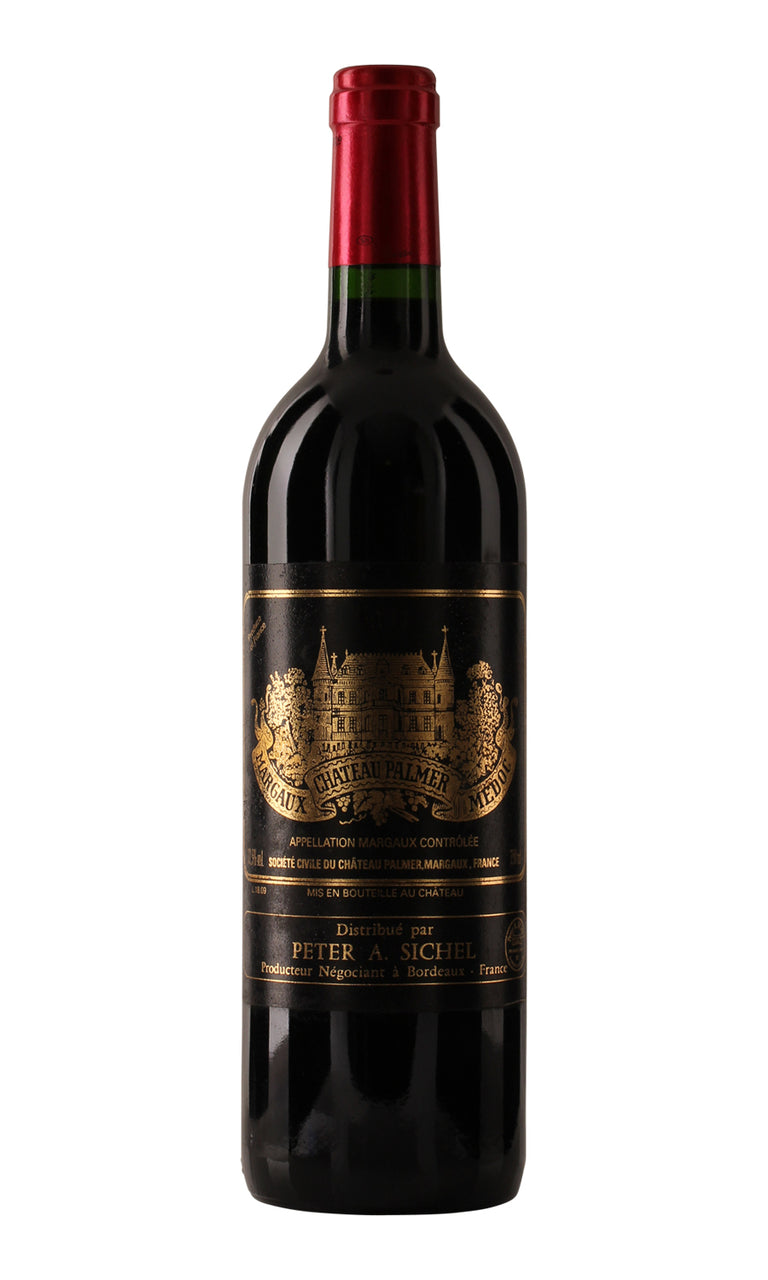- Colour Red
- Producer Château Palmer
- Region Margaux
- Drinking 2022 - 2070
- Case size 3x75cl
- Available Now
2010 - Ch Palmer 3ème Cru Margaux Ex Château Sept 2020 - 3x75cl
- Colour Red
- Producer Château Palmer
- Region Margaux
- Drinking 2022 - 2070
- Case size 3x75cl
- Available Now
Select pricing type
Need help? Call +44 (0)20 7793 7900 or email wine@goedhuiswaddesdon.com.
-
Goedhuis, April 2011, Score: 95-97
With 54% Merlot in the finished blend this is a wonderfully contrasting style to its next door neighbour Ch Margaux. Intensely opaque in colour, this is full of brambles and plums on the nose; in the mouth it is intense and concentrated, with a bright freshness on the finish. DR
-
Neal Martin, April 2020, Score: 96
The 2010 Palmer has an outgoing, intense and multifaceted bouquet with black cherries, boysenberry, crushed violets and hints of cassis - your quintessential Margaux turned up to eleven. The palate is medium-bodied with very supple tannins and a fine bead of acidity. Headier than its Margaux peers, it builds in the mouth with a complex, marine-tinged finish with cracked black pepper lingering on the aftertaste. This is an outstanding Palmer but it needs more time in bottle. Drink 2026 - 2070
-
Neal Martin, March 2011, Score: 92-94
The 2010 Palmer is a blend of 54% Merlot, 40% Cabernet Sauvignon and 6% Petit Verdot, delivering 14.5% alcohol and a pH of 3.65. This has a very pure bouquet where the Cabernet Sauvignon is again, dominating the aromatics: blackberry, boysenberry and a touch of graphite. The palate is full-bodied with mineral-rich black fruits, very linear and focused, but there is just a touch of alcohol blurring the finish and taken the edge off it its precision.
-
Robert Parker, February 2013, Score: 98+
The 2010 Palmer is one of the superstars of the vintage, a blend of 54% Merlot, 40% Cabernet Sauvignon and 6% Petit Verdot, which is just slightly different than what I indicated two years ago. The alcohol level hit 14.5%, and the wine comes across like a more stacked-and-packed version of their 2000. It is tannic and backward, but has a sensational black/purple color and a gorgeous nose of camphor, barbecue smoke, blackberry and cassis. Full-bodied, with oodles of glycerin but a relatively healthy pH, this wine has a precision and freshness that belie its lofty alcohol and extravagant concentration. This is a sensationally rich, full-throttle Palmer that could well end up being one of the all-time great wines made at this estate. It needs a good 7-10 years of cellaring and should keep for 50 or more years. There’s no question that Thomas Duroux and the staff at Palmer are producing wines of first-growth quality, and have been for nearly a decade.
-
Robert Parker, May 2011, Score: 95-97
The 2010 Palmer, which is 50% Merlot and the rest mostly Cabernet Sauvignon except for 6% Petit Verdot, is a huge, inky/purple-colored wine with notes of camphor, incense, blackberry, espresso roast, and subtle barbecue smoke. Extremely full-bodied and unbelievably powerful (14.5% natural alcohol, but with a rather standard pH of 3.75), this wine is going to be one of the great classics ever to emerge from this iconic chateau. It is extremely tannic, but the tannins are eclipsed by the extravagant concentration of fruit, unctuosity, and density of this wine. This will be a Chateau Palmer to put away for 10 years and drink over the following 40+. Drink: 2021 - 2061
-
James Suckling, April 2011, Score: 97-98
This nose is crazy with treacle tart, dark fruits, spices and milk chocolate. I was in a state of amazement tasting this. Full bodied and very powerful with wonderful ripe tannins and intense nuts and dark chocolate on the palate. This is more powerful than 2009. I am blown away.
-
Decanter, April 2020, Score: 98
One of the great years of Bordeaux now at 10 years old and showing why this is such an unusual vintage in terms of the depth of structure and muscular concentration that was achieved. In fact, I am upping the drinking window from the last time I tasted this, as there is such a pulse of life and grip that shows no signs of going anywhere. The initial layers are starting to be peeled back, but this retains primary black and blue fruits that are still full of flesh alongside baked earth, tons of liquorice and black chocolate with a grippy tannic structure, fresh acidities and a serious attitude. Brilliant stuff, that is clearly going to power on for decades. Drinking Window 2022 – 2048. Jane Anson.
-
Decanter, April 2011, Score: 19.5
Superb richness and already showing a velvety texture, wonderful freshness and flavours that keep on growing, a magnificent Palmer. Drink 2020-2050
-
Jancis Robinson, April 2011, Score: 18
54% Merlot, 40% Cabernet Sauvignon, 6% Petit Verdot. Very dark purple. Amazingly sweet and luscious on the nose. Incredibly sweet and distinctive – pure pleasure at first. Very round and luscious and has massive polish. Incredibly open at this stage – will it close up, I wonder? But underneath, a great stew of tannins lurk..! Great freshness but no leafiness. This is already carrying the Palmer hallmark in spades and its only on the finish that one sees the strong vintage character. Nothing excessive. pH 3.65. 14.5%. Drink 2018-2040
-
Wine Spectator, April 2011, Score: 95-98
This dense red offers a big core of currant, plum and cassis, with lots of buried violet and anise. Really loaded on the back end, this is very muscular, but still velvety. Features saturated fruit on the finish, but stays restrained. Should be very long-lived. Tasted non-blind. -J.M
-
Wine Cellar Insider, April 2020, Score: 97
Compelling aromatics set off by flowers, blackberries, truffle and black licorice. In the mouth, the texture is pure silk and velvet. The wine is refined, polished, soft, fresh and elegant, with a long, sweet, fresh, rich, sensuous finish that remains on your palate for close to 40 seconds. The wine was made from a blend of 54% Merlot, 40% Cabernet Sauvignon and 6% Petit Verdot, the wine reached 14.5% alcohol.
Producer
Château Palmer
Château Palmer has many followers. Indeed in certain vintages it even rivals Château Margaux itself. Its 1961 was one of the most compelling wines of the vintage outperforming most first growths. Many deem this château far more noble than its original classified third growth status which can be confirmed by its price.
Region
Margaux
Plump, silky and seductive are the words often used to describe wines from Margaux. Because of their style, they tend to be user friendly and more approachable when young. This is in part due to its terroir which is comprised of the thinnest soil as well as the highest proportion of chunky gravel in all of the Médoc. It drains well but also is it more susceptible to vintage variation. Margaux wines tend to have the highest proportions of Merlot within the core of the Médoc further adding to their ample roundness and openness. Margaux is home to the largest number of classified growths including its namesake first growth, Château Margaux, as well as third growths, Palmer and d'Issan.




